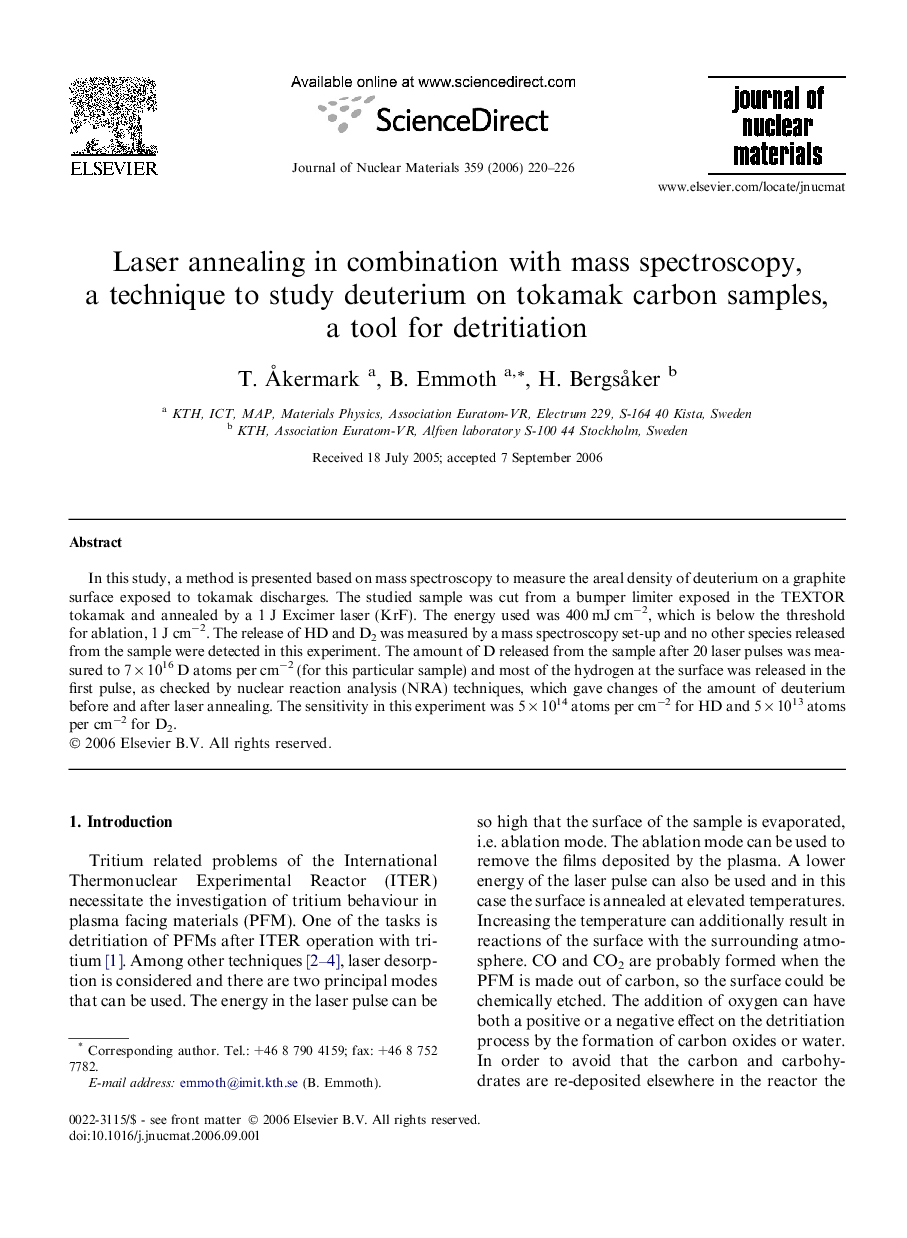| Article ID | Journal | Published Year | Pages | File Type |
|---|---|---|---|---|
| 1569629 | Journal of Nuclear Materials | 2006 | 7 Pages |
Abstract
In this study, a method is presented based on mass spectroscopy to measure the areal density of deuterium on a graphite surface exposed to tokamak discharges. The studied sample was cut from a bumper limiter exposed in the TEXTOR tokamak and annealed by a 1Â J Excimer laser (KrF). The energy used was 400Â mJÂ cmâ2, which is below the threshold for ablation, 1Â JÂ cmâ2. The release of HD and D2 was measured by a mass spectroscopy set-up and no other species released from the sample were detected in this experiment. The amount of D released from the sample after 20 laser pulses was measured to 7Â ÃÂ 1016Â D atoms per cmâ2 (for this particular sample) and most of the hydrogen at the surface was released in the first pulse, as checked by nuclear reaction analysis (NRA) techniques, which gave changes of the amount of deuterium before and after laser annealing. The sensitivity in this experiment was 5Â ÃÂ 1014 atoms per cmâ2 for HD and 5Â ÃÂ 1013 atoms per cmâ2 for D2.
Related Topics
Physical Sciences and Engineering
Energy
Nuclear Energy and Engineering
Authors
T. Ã
kermark, B. Emmoth, H. Bergsåker,
